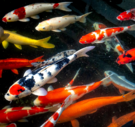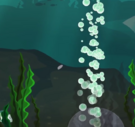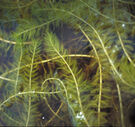
Down the Drain
Nature’s Pond, powered by Koender’s Water Solutions has taken its mission to save the planet’s water, nature’s way, to the next level by introducing “4-in-One Plumbing, Septic and Sewage” treatment. This powerful 4-in-One tackles many environmental issues caused by common problems with plumbing, septic and sewage systems.
Common problems can arise with your plumbing whether you are on septic or sewage treatment.
Septic tanks and residential sewage lagoons are common in rural areas and on the outskirts of larger centers. They are underground holding tanks or small ponds that waste water flow to from rural home and buildings. These systems process waste into three compounds; water, gas, and solids. Natural occurring bacteria aid in the breakdown process of separating these compounds. The water and gasses are released, and solids settle to the bottom, requiring periodic pump outs or dredging.
These helpful Do’s and Don’ts will help you avoid problems with your plumbing, septic, and sewage, and help the environment.
This article will give you a good idea of what should and shouldn’t go down the drain, being conscious of your water usage and thinking about what’s best for your system and the environment is an important first step.
Soft water will require less than hard water.
This can create an imbalance in the bacteria culture and slow down the breakdown process of waste. Use natural, environmentally friendly, phosphate free cleaning products.
Laundry day and shower day add excessive water to the system which creates an imbalance. Excess water will dilute your system, not giving the solid waste a chance to break down before water will be pumped out. This can cause blockages in the system when solid matter tried to pass through. To avoid this spread out doing laundry, dishes, and showering throughout the week. Low flow toilets and shower heads can also help.
Stick to using the same products. The bacteria in your system will work more efficiently to break down familiar products so use the same soaps, detergents, and cleaning products. Phosphate free soaps and detergents are best for the environment.
Tampons, sanitary napkins, wipes, baby diapers, incontinence pads, cotton pads, cotton swabs, rubber products, or any non-biodegradable items should not be flushed down the toilet. Be wary of products marketed as “flushable” like wipes, because even these items can cause blockages in your system. To be safe only flush toilet paper down the toilet.
Fats can inhibit the breakdown process. It is estimated that one litre of full cream milk contains enough fat to cover the surface of an Olympic sized swimming pool. Dispose of high fat items in the garbage can and wipe our greasy pots and pans with a paper towel before rinsing to minimize fat entering your system.
Medication, nail polish remover, mouth wash, engine oil, anti-freeze, fertilizer, paint thinner, bleach, hazardous acids and corrosive treatments along with any other products containing harsh chemicals should not be disposed of through septic or sewer systems. Chemicals can cause harm to the bacteria culture in the system, interrupting the break down process, corroding the holding tanks, plumbing pipes and the discharge which can potentially pollute ground and surface water.
Even products that are meant for the drains can be harmful to your plumbing, septic, and sewer systems. The acid in these products can be corrosive, harm bacteria and pollute ground and surface water. The same goes for acid treatments for restaurant grease traps. Nature’s Pond 4-in-One provides a good substitute for these products.
A well-designed septic or sewer system shouldn’t incur any problems if these do’s and don’ts are followed. But even when water, waste, and toilet paper are the only things entering the system, it takes time for the natural break down process to occur. And often these systems are tasked with more than they can handle. The average person uses between 80 and 100 gallons of water per day. You can understand why the most common problem for septic and sewage treatment plants is capacity, along with back up, odors, and phosphate polluted discharge. Nature’s Pond 4-in-One Plumbing, Septic & Sewage was designed to tackle these issues.
Nature's Pond '4-in-One Plumbing, Septic & Sewage is a highly concentrated mix of beneficial bacteria and enzymes. It’s a simple, ready-to-use, safe and effective approach to septic and sewage control. It’s specifically designed for the bio-degradation of organic solids and composting. It has unique capabilities which enhance the natural metabolism of fats, oils and greases of human, animal and plant origin, and includes a special bacterial culture that also consumes harmful phosphates that are a major source of pollution into our underground and surface fresh water. This naturally occurring probiotic formula of bacteria also helps to dramatically reduce odors that are derived from the gas build up caused by the bio-degradation process within waste treatment and collection systems. A wonderful product that is gentle enough to be used to reduce odors in washing machines while at the same time effectively reducing grease trap and sewage clogs caused by fats, oils and greases.
enzymes. It’s a simple, ready-to-use, safe and effective approach to septic and sewage control. It’s specifically designed for the bio-degradation of organic solids and composting. It has unique capabilities which enhance the natural metabolism of fats, oils and greases of human, animal and plant origin, and includes a special bacterial culture that also consumes harmful phosphates that are a major source of pollution into our underground and surface fresh water. This naturally occurring probiotic formula of bacteria also helps to dramatically reduce odors that are derived from the gas build up caused by the bio-degradation process within waste treatment and collection systems. A wonderful product that is gentle enough to be used to reduce odors in washing machines while at the same time effectively reducing grease trap and sewage clogs caused by fats, oils and greases.
This blog discusses pond issues and solutions for Homeowner Associations.

This blog discusses the history of koi, tips and care suggestions, and how to keep a koi pond clean and clear.

Aeration Systems and the Benefits of Bottom UP Aeration…
A quick look at how Nature's Pond Conditioner works for your pond!

What is an Ecosystem? “An ecosystem is a geographic…